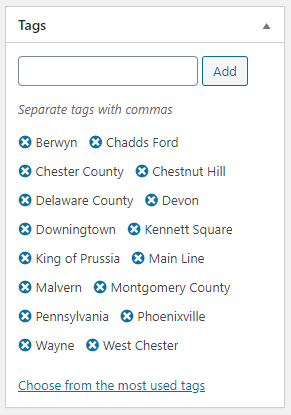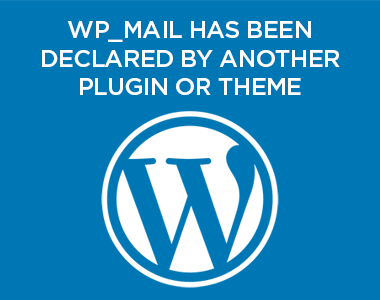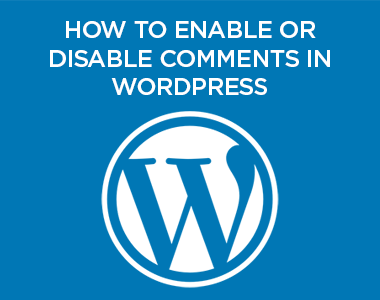What is a WordPress Tag?
If you have a WordPress website, tags are used to organize your WordPress posts into one or more groups. As with WordPress categories, you may associate one or more tags with each post.
Tags commonly appear as links that visitors may click to find additional posts associated with the same tag.
Tags are not required, but proper tagging of posts allows your readers another great means to access related content on your site. Think of the tag list as another organizational method to help your readers find and read your great content.
 If WordPress categories are a table of contents for your blog, then tags are the index.
If WordPress categories are a table of contents for your blog, then tags are the index.
Common Tagging Problems to Avoid
Most first time users of WordPress tend to comprehend categories, yet I often run across sites with widespread tag-related issues. A few common themes show up:
One-off Tags
Take this common scenario:
An author writes a great post—let’s say it’s about how their local ice cream business supported a little league team this summer by providing free gear. It includes some nice, endearing video interviews with the kids. When it comes time to assign tags, the author looks back over the post and picks out various items covered in the article:
- Little League
- Baseball
- Sports
- Charity
- Community Support
- Videos
- The Town’s Name
- The Team’s Name
- The Coach’s Name
- Etc.
We can see how this might make sense to someone. These are after all terms which describe the content of the post. The problem here is that most, if not all, of these tags may be unique to this single post. Even if this ice cream business website publishes 200 posts over the next few years, this post may be the only one that discusses ‘baseball’ or ‘sports’ in this manner.
Since, like categories, each tag you use in WordPress generates its own archive page where you can find all the posts tagged with that tag, you would end up with tag pages for ‘baseball’ and ‘sports’ that have one post each—and it’s the same post they just read. That’s not useful to the visitor.
If every post generates 5-10 new, one-off tags, eventually after the first 10 posts are published we will end up with 50-100 tags in play. After the first 100 posts are published, we will have 500-1000 tags in play!
One site, a now defunct fashion blog that published a post a day on average, ended up with 900 tags in use over their first two years. Out of those 900, only 150 tags were used more than once to tag a post. The other 750 were unique tags used only one time.
While it is useful for a book to have an item in its index that appears on only one page, on a website that function is taken over by the WordPress search feature which allows you to easily find any word in any post.
Tags are not Keywords
Many blog authors have been caught using the tags to “keyword-stuff” posts with numerous keywords they think will yield additional search engine traffic. They say, “I’m doing it for search engine optimization.”
However, it doesn’t work that way.
It would be far better to select a couple of those tags most related to your post, focus the writing around those, and incorporate them organically into the title, meta-description, headers and body copy of your post. Adding two dozen tags to your post will only generate a host of thin-content tag archive pages auto-generated by WordPress for each tag used in the system.
Best Practices
Create a Master Tag List
Any WordPress site should develop a master tag list along with its category list and try to stick to that list. Avoid tag creep.
This practice will also help focus your editorial vision, and a strong editorial vision helps build audience.
Use Tags to Give Vistors a Second Way to Explore Your Content
WordPress categories provide the primary way your posts are structured and organized. Tags can provide a very useful secondary means for visitors to explore your content, helping to increase reader engagement and time on site.
Take, for example, an online magazine for a city. Its categories might be those we’d expect: Culture, Events, Lifestyle, Dining, Business, etc. A useful tag list would then be the various neighborhoods of that city. If your site discusses regional events and happenings, you might use the categories for the type of event, while using the tags for the town of the event. If you blog about films and film making, your categories might be various film genres and your tags different directors. Now that is helpful!




